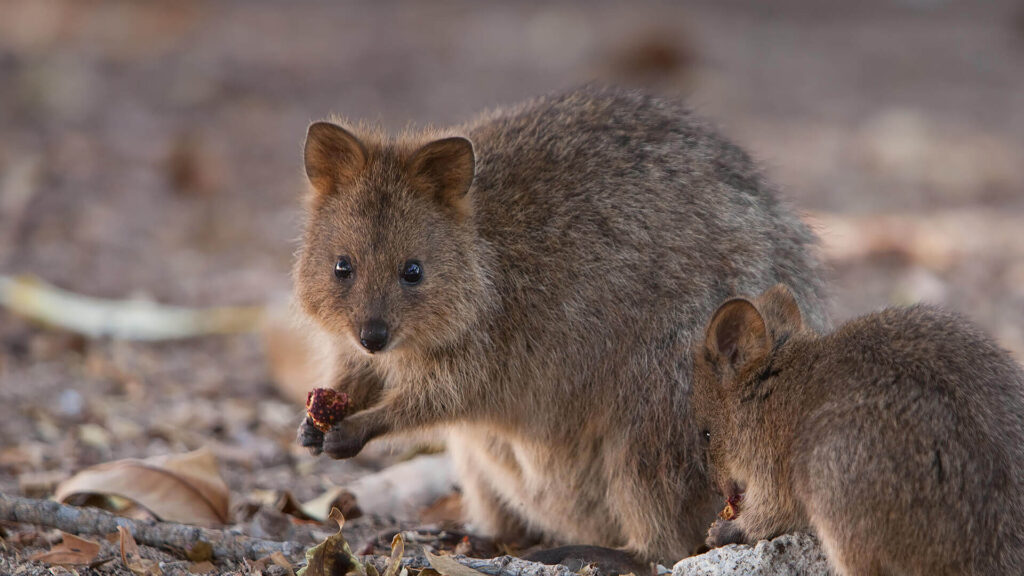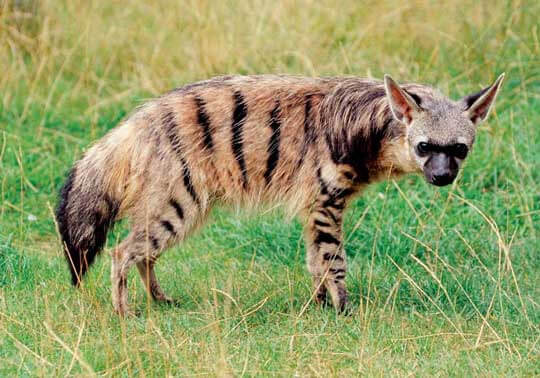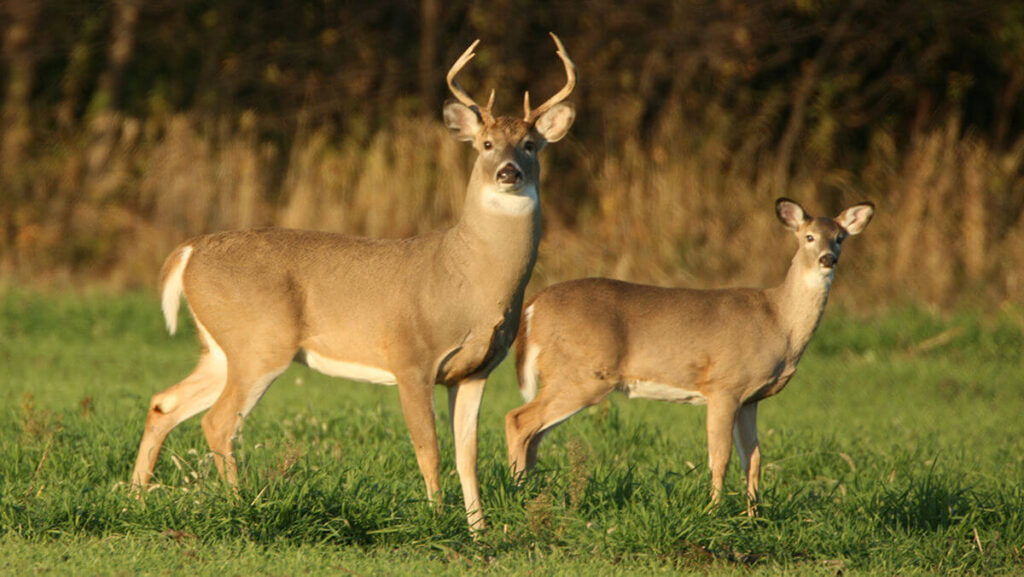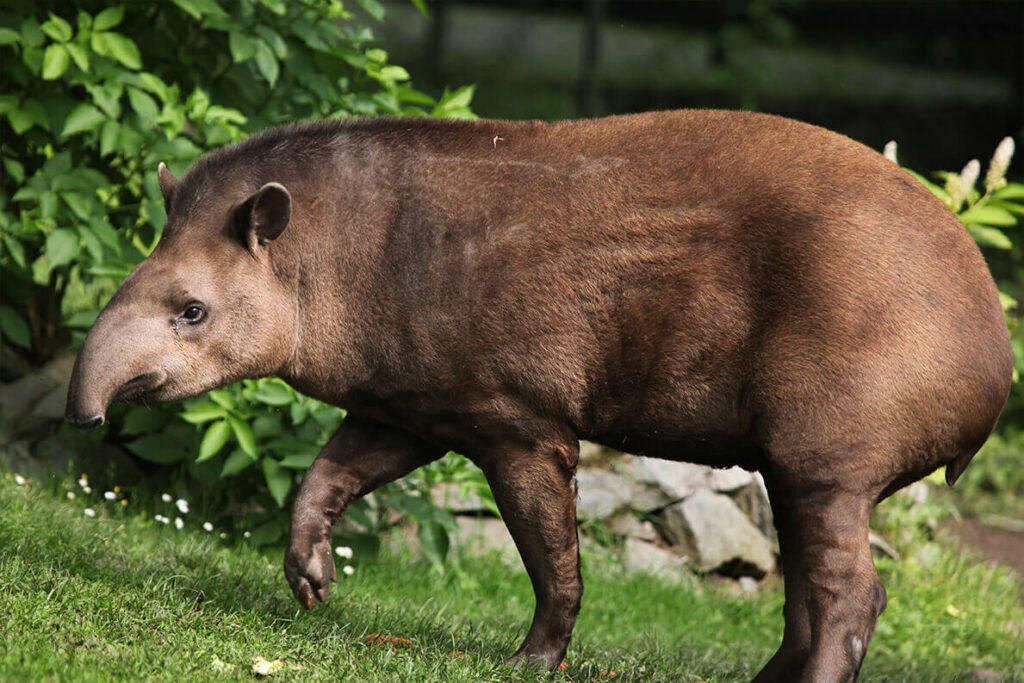In the vast and diverse kingdom of animals, some creatures prefer to live their lives away from the limelight, hidden in the shadows of their habitats. These shy beings exhibit behaviors that reflect a preference for solitude and a cautious approach to interaction with others. From elusive predators prowling in the depths of forests to timid critters darting through meadows, the world is teeming with fascinating species that thrive in quiet obscurity.
Join us on a journey through the enchanting realm of Animals That Are Shy, where we unravel the captivating stories behind these elusive inhabitants and explore what makes them retreat into seclusion despite their remarkable adaptations for survival. Delve deep into their mysterious world as we uncover the unique traits and behaviors that set these introverted animals apart from their more outgoing counterparts.
What Animal Represents Shyness?
Shyness, often misunderstood as a weakness, can be beautifully represented by the humble deer. Just like these gentle creatures that camouflage themselves in the forest, shy individuals may blend into the background to avoid attention. Deer symbolize grace and sensitivity, embodying the cautious nature of those who tend to observe from afar before stepping forward.
Similarly, the rabbit can also be seen as an emblem of shyness. These timid creatures are known for their quick reactions and tendency to flee when faced with unfamiliar situations. Like rabbits, shy individuals may feel overwhelmed by social interactions and prefer solitude to recharge in a safe environment where they can flourish at their own pace. The softness and vulnerability of rabbits mirror the delicate nature of shyness, offering a unique perspective on this trait often overlooked in society.
Shy Animals Chart
| Number Of Animals | Shy Animals |
| #1 | Quokka |
| #2 | Aardvark |
| #3 | Aardwolf |
| #4 | Bat-Eared Fox |
| #5 | Giant Pandas |
| #6 | Meerkats |
| #7 | Giraffes |
| #8 | Snow Leopard |
| #9 | Deer |
| #10 | Pangolins |
| #11 | Porcupines |
| #12 | Sloths |
| #13 | Snakes |
| #14 | Squirrels |
| #15 | Rabbits |
| #16 | Tapirs |
| #17 | Turtles |
| #18 | Zebras |
| #19 | Pink fairy armadillo |
| #20 | Ili Pika |
| #21 | Sunda colugo |
| #22 | Margay |
List Of Animals That Are Shy
Quokka
Scientific Name: Setonix brachyurus
Class: Mammalia
Diet: Herbivores
The quokka, often referred to as the happiest animal in the world, is known for its adorable appearance and shy demeanor. Despite its friendly and approachable nature, quokkas are surprisingly elusive creatures, preferring to hide in dense vegetation or burrows during the day. This shyness adds to their allure, making them even more intriguing and mysterious to those lucky enough to spot one in the wild.

Quokkas’ shyness might be attributed to their solitary nature, as they typically prefer solitude over social interactions. While this may make them harder to observe, it also adds a sense of independence and resilience to these charming marsupials. Their timid behavior serves as a reminder that even the most joyful creatures can have moments of introspection and contemplation. So next time you catch a glimpse of a quokka peeking out from a sheltered spot, take a moment to appreciate their quiet strength and delicate beauty.
Facts: Native to Australia, particularly Rottnest Island, they are nocturnal herbivores that mainly feed on grasses and leaves.
Aardvark
Scientific Name: Orycteropus afer
Class: Mammalia
Diet: Insectivores
The Aardvark, with its shy and solitary nature, often goes unnoticed in the vast African savannah. Known for its unique appearance and nocturnal habits, this elusive creature embodies a sense of mystery and intrigue. Despite being a skilled digger and consuming thousands of ants and termites each night, the Aardvark prefers to keep a low profile, avoiding confrontations with other animals.
While many may view the Aardvark as timid or reserved, it possesses an extraordinary sense of smell that helps it navigate through the darkness with ease. This remarkable adaptation allows the Aardvark to locate its prey underground and avoid potential threats. By observing this behavior, we can appreciate the subtle yet efficient ways in which these creatures survive in their natural habitat. In a world filled with loud and dominant species, the quiet resilience of the Aardvark serves as a reminder that sometimes it is those who speak softly that possess hidden strengths.
Aardwolf
Scientific Name: Proteles cristata
Class: Mammalia
Diet: Insectivores
The aardwolf, with its timid nature and solitary habits, often goes unnoticed in the wild landscapes of Africa. Despite its resemblance to the fierce hyena, this shy creature prefers to avoid confrontation and instead feeds on termites under the cover of darkness. In a world where size and strength dominate the animal kingdom, the aardwolf stands out for its unique adaptation and survival strategy.

Unlike its more aggressive relatives, the aardwolf relies on stealth and patience to navigate its nocturnal environment. Its delicate appearance belies a voracious appetite for termites, showcasing the beauty of adaptation in nature. While it may not roar like lions or hunt in packs like wolves, the aardwolf thrives by carving out its own niche in the ecosystem. Observing this quiet observer brings a sense of reverence for the subtle intricacies that make up our natural world.
Bat-Eared Fox
Scientific Name: Otocyon megalotis
Class: Mammalia
Diet: Omnivores
The bat-eared fox, with its distinctive large ears and timid nature, is a fascinating creature that roams the savannas of Africa. Despite their shy demeanor, these foxes are highly social animals known for their complex vocalizations that resemble the sound of a bird chirping in the night. Their keen sense of hearing allows them to detect even the smallest insect movements underground, making them expert hunters of termites and other insects.
These elusive creatures are monogamous animals that form strong family bonds and communicate through a series of bark-like noises. While they may appear unassuming at first glance, bat-eared foxes are agile and swift predators capable of outrunning larger predators in pursuit of their prey. Their unique adaptations and behavior make them essential members of the African ecosystem, playing a vital role in controlling insect populations and maintaining balance within their habitats.
Facts: This small fox is easily recognized by its large ears, which help regulate body temperature and enhance hearing for locating insects in the grasslands of Africa. Bat-eared foxes primarily feed on insects like termites and beetles but also enjoy fruits when available.
Giant Pandas
Scientific Name: Ailuropoda melanoleuca
Class: Mammalia
Diet: Herbivores
Giant pandas, often seen as shy and elusive creatures, have long captured the hearts of people around the world. While their reserved nature may make them seem distant, it actually serves as a protective mechanism in their natural habitat. These gentle giants are known to be solitary animals, preferring solitude over social interactions due to their territorial instincts.

Despite their shy demeanor, giant pandas are incredibly playful and curious when they feel safe. Their cautious approach to new situations highlights their ability to adapt and survive in ever-changing environments. Their preference for bamboo as a main food source showcases their resourcefulness and resilience in the face of challenges such as habitat loss and fragmentation.
Facts: Known for their black-and-white fur pattern, giant pandas primarily eat bamboo, up to 40 pounds a day, despite being members of the carnivore family. They are native to China’s mountainous regions and are considered a symbol of conservation efforts due to their endangered status.
Meerkats
Scientific Name: Suricata suricatta
Class: Mammalia
Diet: Insectivores
Meerkats are often portrayed as social and outgoing animals, but what many people don’t realize is that they can also be quite shy. In the wild, meerkats are known to be cautious and hesitant around unfamiliar surroundings or new members of their group. This shyness may stem from their instinctual need to protect themselves and their burrows from potential threats.
Despite their timid nature, meerkats still exhibit a strong sense of community within their groups. They rely on each other for safety, food, and companionship. It’s interesting to observe how shy meerkats slowly overcome their fears when surrounded by trusted companions, showing resilience and adaptability in challenging situations. Overall, the shy side of meerkats adds depth to our understanding of these fascinating creatures’ behavior in the wild.
Giraffes
Scientific Name: Giraffa camelopardalis
Class: Mammalia
Diet: Herbivores
Giraffes are often misunderstood as shy animals due to their quiet nature and gentle demeanor. They prefer to keep to themselves in the vast savannah, grazing on leaves high up in the treetops. Despite their reserved exterior, giraffes exhibit remarkable social behavior within their herds. They communicate through subtle gestures such as rubbing necks or licking each other’s faces, showing a depth of connection that is often overlooked.

One fascinating aspect of giraffes‘ shyness is their tendency to avoid conflict whenever possible. When faced with potential threats, they will often attempt to defuse the situation by walking away gracefully rather than engaging in aggressive behavior. This peaceful approach reflects a level of intelligence and emotional awareness that sets giraffes apart from other animals in the wild. In a world where strength and dominance reign supreme, these gentle giants offer a refreshing perspective on how shyness can be a strength rather than a weakness.
Facts: The tallest land mammals on Earth, giraffes can reach heights up to 18 feet thanks to their long necks; interestingly, they have the same number of neck vertebrae as humans—seven! Giraffes are browsers that primarily eat leaves from trees; their long tongues (up to 20 inches) help them grasp foliage high above ground level.
Snow Leopard
Scientific Name: Panthera uncia
Class: Mammalia
Diet: Carnivores
The elusive snow leopard, known as the Ghost of the Mountains, is a shy and solitary creature that roams the high altitudes of Central Asia with grace and stealth. Despite their stunning appearance with thick fur and piercing eyes, these majestic cats prefer to stay hidden from human sight, making them even more intriguing to those who seek to catch a glimpse of their beauty in the wild.
The snow leopard is different from other big cats because it has special features that help it survive in cold mountains. Its thick fur keeps it warm, and its big paws help it walk on snow easily. Snow leopards are skilled hunters, catching animals like Himalayan blue sheep and ibex with great accuracy. They are hard to see in the wild because they are shy, but efforts are being made to protect them from dangers like poaching and losing their homes. Conservation groups are working hard to teach people about the importance of saving snow leopards so that future generations can see and appreciate these amazing animals.
Deer
Scientific Name: Cervidae
Class: Mammalia
Diet: Herbivores
Deer, with their timid and gentle nature, often find themselves misunderstood by humans. Their shy behavior is actually an evolutionary adaptation that helps them avoid predators in the wild. Despite their elusive tendencies, deer display a remarkable sense of awareness and agility when navigating through dense forests and open fields.

Many people fail to realize that deer are social animals with intricate communication systems. Through various body signals and vocalizations, they are able to convey messages of danger or alert others within their herd. Observing these subtle interactions can provide a deeper understanding of the complex social dynamics present among these seemingly solitary creatures.
Pangolins
Scientific Name: Pholidota
Class: Mammalia
Diet: Insectivores
Pangolins, often referred to as the shy armor-wearing creatures, are fascinating animals that have captured the curiosity of many wildlife enthusiasts. These solitary mammals are known for their unique appearance, covered in scales that serve as a protective armor against predators. Despite their timid nature, pangolins possess incredible adaptations that make them formidable fighters when threatened.
Pangolins eat ants and termites with their long sticky tongues. This diet affects how they look and shows how important they are in controlling insects in their habitats. Their shy and hidden behavior makes them easy targets for illegal trading and hunting. All eight pangolin species are at risk because of people. It’s important to protect these animals to keep the environment healthy for future generations.
Porcupines
Scientific Name: Erethizon dorsatum
Class: Mammalia
Diet: Herbivores
Porcupines, often known for their sharp quills, are shy creatures that prefer to keep to themselves in the quiet of the night. Contrary to popular belief, these timid animals are not aggressive by nature and only resort to using their quills as a defense mechanism when feeling threatened. Despite their prickly appearance, porcupines are gentle herbivores that primarily feed on plants and bark.

Interestingly, these solitary animals have a surprisingly long lifespan of up to 20 years in the wild. Their shy nature makes them elusive and rarely seen by humans, adding an air of mystery to these unique creatures. While porcupines may not be the most charismatic or sociable animals, their quiet presence serves as a reminder of the beauty and complexity of nature’s creations.
Facts: Porcupines possess quills that can detach easily when predators attempt to attack; these quills can embed themselves in the skin of attackers. They are excellent climbers and spend much of their time in trees, where they find food and safety from ground-based predators.
Sloths
Scientific Name: Folivora
Class: Mammalia
Diet: Herbivores
Sloths, often portrayed as lazy creatures, are actually shy animals that prefer to hide away from prying eyes in the dense canopy of trees. Their slow movements and quiet demeanor may give the impression of laziness, but it is their reserved nature that truly defines them. Sloths have adapted to their environment by maintaining a low profile and conserving energy whenever possible.
One interesting aspect of sloths’ shyness is their ability to blend in seamlessly with their surroundings. Their fur often hosts algae, providing them with natural camouflage that helps them avoid detection by predators. This unique adaptation not only highlights their shy disposition but also showcases their ingenuity in survival strategies within the rainforest ecosystem.

Despite being solitary animals for most of their lives, sloths do occasionally interact with each other during mating season or when sharing a tree for shelter. These brief encounters offer glimpses into the social dynamics of these otherwise shy animals, revealing a complex web of relationships that are vital for their survival in the wild.
Snakes
Scientific Name: Serpentes
Class: Reptilia
Diet: Carnivores
Snakes, often misunderstood as aggressive creatures, are actually shy and elusive by nature. These fascinating reptiles prefer to avoid confrontation and will usually retreat when faced with potential threats. Their shy behavior is a survival mechanism that allows them to stay out of harm’s way in the wild.
One interesting aspect of snake behavior is their ability to communicate through body language. When feeling threatened or scared, snakes may exhibit defensive behaviors such as hissing or rattling their tails. Understanding these cues can help us respect their boundaries and coexist peacefully with these shy animals.
Squirrels
Scientific Name: Sciuridae
Class: Mammalia
Diet: Herbivores
Squirrels are often seen as timid and shy creatures, quick to scurry away at the slightest hint of danger. But beneath their cautious demeanor lies a fascinating world of social behavior and communication. These furry little animals are actually quite sensitive to their environment, constantly alert for any signs of predators or potential threats.

One interesting aspect of squirrels’ shyness is how they have developed intricate communication systems to navigate their surroundings safely. They use a combination of vocalizations, body language, and even scent marking to communicate with each other and signal potential dangers. This complex network of communication helps them stay connected while staying hidden from potential predators.
Rabbits
Scientific Name: Oryctolagus cuniculus
Class: Mammalia
Diet: Herbivores
Rabbits are often misunderstood creatures, perceived as shy and timid animals. However, beneath their quiet demeanor lies a complex and fascinating world of behavior and communication. These gentle creatures use various forms of non-verbal cues to communicate with each other, such as thumping their hind legs to signal danger or flicking their ears to express curiosity.
Despite their shy nature, rabbits have intricate social structures within their communities. They form strong bonds with other rabbits and even display affection through grooming and snuggling. Observing these interactions can offer a glimpse into the rich emotional lives of these seemingly reserved animals. Understanding the subtle ways in which rabbits interact with each other can deepen our appreciation for the complexity of their social dynamics.
Tapirs
Scientific Name: Tapiridae
Class: Mammalian
Diet: Herbivores
Tapirs are often considered shy and elusive creatures, known for their quiet and solitary nature. These large, herbivorous mammals have a unique appearance with a prehensile proboscis-like snout that helps them grab leaves and other vegetation. Despite their shy demeanor, tapirs play an important role in maintaining the ecosystem by dispersing seeds through their digestive system.

While they may appear timid at first glance, tapirs are actually excellent swimmers and can hold their breath underwater for several minutes. Their ability to move gracefully in the water contrasts with their awkward, lumbering gait on land. Tapirs are also known to be very attentive parents, with females caring for their young until they are independent enough to survive on their own.
Turtles
Scientific Name: Testudines
Class: Reptilia
Turtles are often known for their shy and seemingly timid nature. While some may see this as a sign of weakness, it is actually a fascinating survival mechanism developed over millions of years. Their shyness allows them to blend seamlessly into their surroundings, making it easier for them to avoid predators and threats in the wild.
Despite their reserved demeanor, turtles have a remarkable adaptability that serves them well in various environments. From the depths of the ocean to freshwater lakes and even deserts, these creatures have found ways to thrive while maintaining their cautious approach to life. This adaptability highlights the resilience of turtles and underscores the importance of conserving their habitats to ensure their continued existence.
Zebras
Scientific Name: Equus quagga
Class: Mammalia
Diet: Herbivores
Zebras, often admired for their striking black and white stripes, are also known for their shy and elusive nature. Despite their bold appearance, zebras are actually very cautious animals, preferring to stay together in groups called herds to protect themselves from predators. This social behavior reflects a deep sense of insecurity that zebras possess in the wild, constantly on guard and ready to flee at the first sign of danger.

Their shyness is further accentuated by their unique communication methods, using various vocalizations and body cues to maintain social bonds within the herd. Zebras are highly sensitive creatures, easily spooked by sudden movements or loud noises. This inherent timidity serves as a survival mechanism in the harsh African savannah where they reside. Although zebras may appear confident from afar, a closer look reveals their gentle and introverted personalities that add depth to these fascinating animals’ character.
Pink Fairy Armadillo
Scientific Name: Chlamyphorus truncatus
Class: Mammalia
Diet: Insectivore
The Pink Fairy Armadillo, also known as the pichiciego, is a fascinating shy creature that resides in the sandy plains of Argentina. With its delicate pink armor and fluffy white underbelly, this tiny armadillo looks like something out of a fairy tale. Despite its diminutive size, the Pink Fairy Armadillo is equipped with powerful claws that allow it to burrow deep into the ground with incredible speed.
Unlike its larger armored relatives, this elusive creature prefers a solitary lifestyle and spends most of its time hidden underground. The Pink Fairy Armadillo is a true master of evasion, rarely venturing above ground except under the cover of darkness. Its unique appearance and enigmatic behavior make it a captivating subject for researchers and wildlife enthusiasts alike.
Facts: The pink fairy armadillo is the smallest armadillo species, measuring only about 5 to 6 inches long.
Ili Pika
Scientific Name: Ochotona iliensis
Class: Mammalia
Diet: Herbivores
The elusive and endearing Ili Pika, also known as the magic rabbit, is a shy and rare small mammal found only in the Tianshan Mountains of northwestern China. With its teddy bear-like appearance and shy demeanor, this adorable creature has captured the hearts of conservationists and animal lovers around the world. Despite its cute exterior, the Ili Pika faces numerous threats to its survival, including habitat loss due to climate change and human encroachment.

Unlike many other social animals, Ili Pikas are solitary creatures that prefer to live alone in rock crevices or burrows among high-altitude cliffs. While their timid nature may make them difficult to spot in the wild, their presence is vital for maintaining ecosystem balance in their mountainous habitat. As global awareness of the importance of protecting endangered species grows, efforts to study and conserve the Ili Pika have intensified, offering hope for this unique animal’s continued existence in the face of mounting challenges.
Facts: The Ili pika was discovered in 1983 in China’s Tian Shan mountains and is critically endangered due to habitat loss and climate change. This small mammal is known for its adorable appearance, with round ears and fluffy fur that helps it survive cold mountain temperatures.
Sunda Colugo
Scientific Name: Galeopterus variegatus
Class: Mammalia
Diet: Herbivores
One of the most shy and elusive animals in the rainforests of Southeast Asia is the Sunda Colugo. Known for their gliding ability, these creatures are often spotted in the treetops at dusk, gracefully moving between trees as if they were flying. Despite their cute appearance, Sunda Colugos are solitary animals that prefer to stay hidden from predators and humans alike.
Their long limbs and parachute-like skin allow them to glide up to 200 feet in a single leap, making them one of the most skilled aerial acrobats in the animal kingdom. While they may seem timid and reserved, Sunda Colugos are actually highly intelligent creatures with a complex social structure within their small family groups. With their soft fur and large eyes, these shy animals have captured the hearts of many wildlife enthusiasts who admire their quiet grace and mysterious nature.
As twilight descends upon the rainforest canopy, the Sunda Colugo emerges from its daytime slumber to embark on its nightly adventures. With a keen sense of hearing and sharp claws for gripping onto tree branches, these animals navigate through their arboreal playground with ease.
Margay
Scientific Name: Leopardus wiedii
Class: Mammalia
Diet: Carnivore
The Margay, a shy and elusive cat native to Central and South America, is often referred to as the tree ocelot due to its excellent climbing abilities. Unlike other big cats, Margays are primarily nocturnal hunters, preying on small mammals, birds, and insects under the cover of darkness. These solitary animals are known for their agility and stealth in navigating dense rainforest canopies.

One fascinating aspect of the Margay’s behavior is its unique vocalizations, which include high-pitched calls and bird-like chirps used for communication with conspecifics. Despite their reserved nature, Margays have been observed engaging in playful behaviors such as hunting non-prey items like leaves or twigs. Their ability to adapt to various habitats within their range showcases their remarkable survival skills in ever-changing environments. The enigmatic persona of the Margay adds an air of mystery to these captivating creatures roaming the treetops of tropical forests.
Final Thoughts
Animals that are shy play an important role in the natural world, often serving as indicators of environmental health and balance. While their elusive nature may make them harder to spot, it is essential to recognize and respect their need for space and privacy. By understanding and appreciating shy animals, we can foster a deeper sense of empathy towards all living creatures.
Let’s strive to create a safe and welcoming environment for these sensitive beings, allowing them to thrive in their own unique way. Together, let us ensure the protection and preservation of shy animals for generations to come.
- Male Black Widow Spider Markings - March 23, 2025
- Mexican Red Headed Bird: A Brilliant Avian Wonder - January 16, 2025
- Can Turkeys Eat Bread? - January 15, 2025








